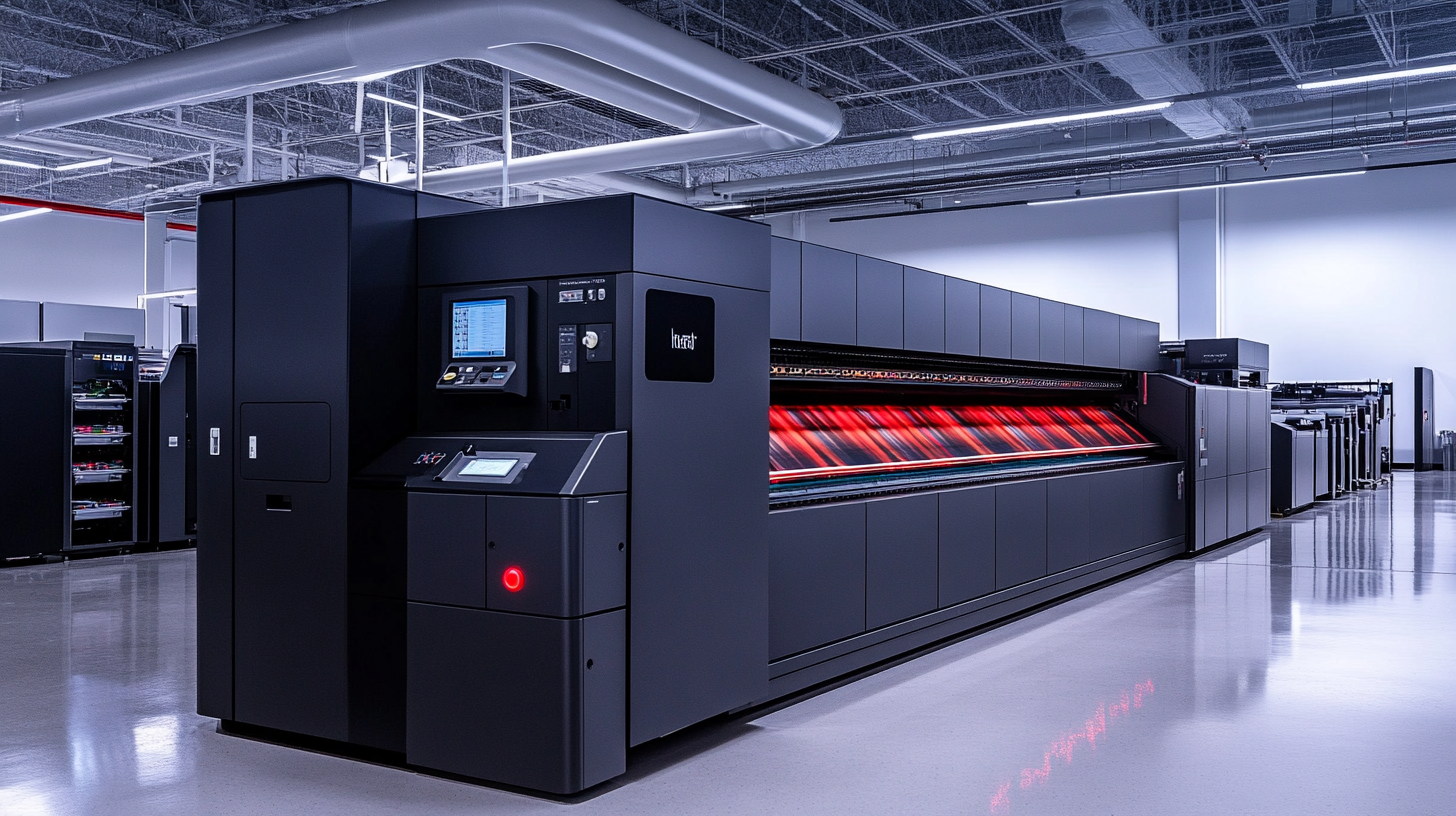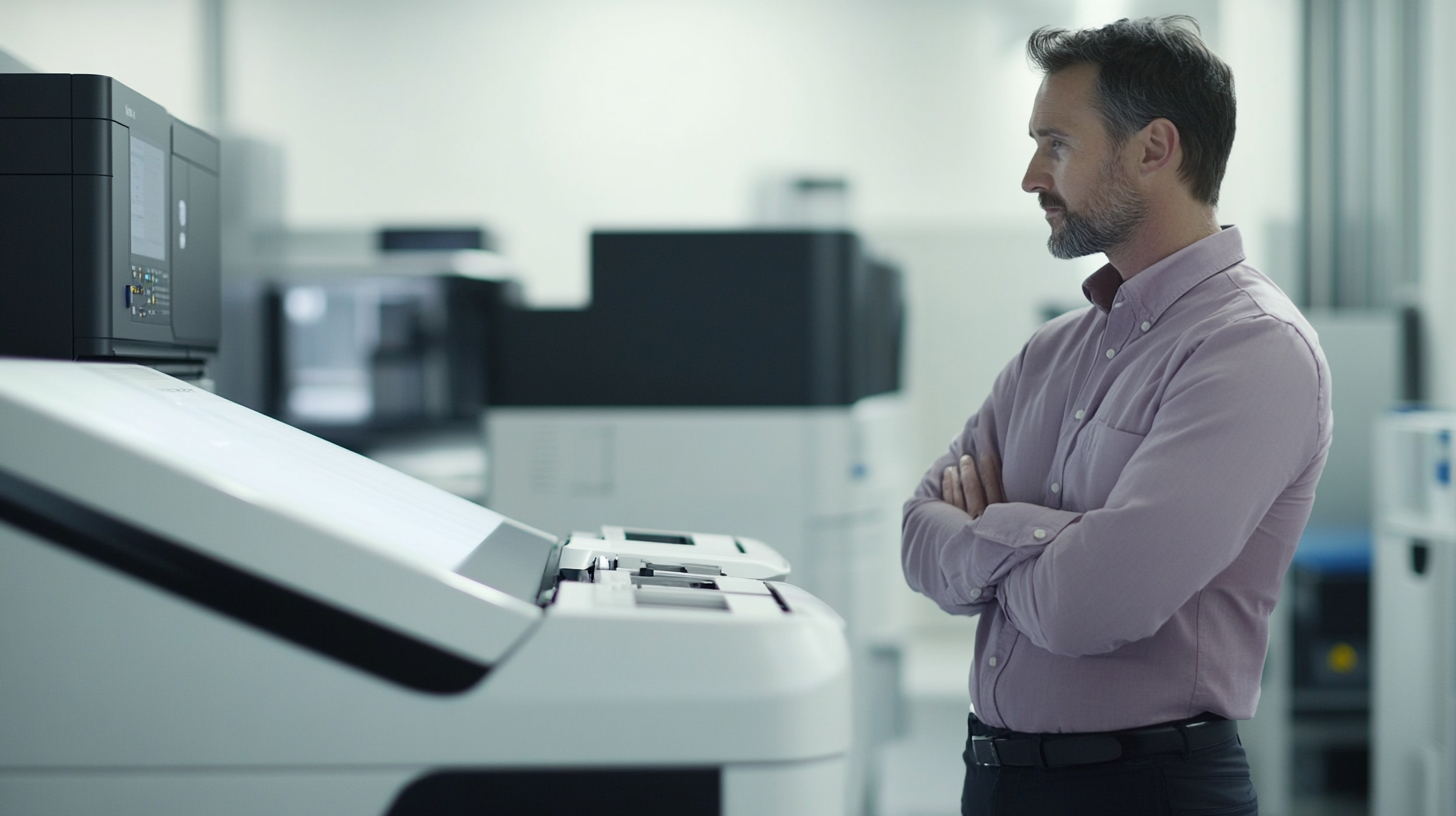Partner Login
Enter your username and password here on order to log in on the partner portal:
No registered partner yet?
Register nowMaximizing Efficiency and Quality with Ink Jet Technology in Modern Printing Solutions
In the fast-paced world of modern printing solutions, the quest for efficiency and quality is more pronounced than ever. Industries are seeking innovative technologies that can streamline processes while ensuring the highest standards of output. Among these advancements, Ink Jet technology stands out as a game-changer, transforming how businesses approach printing tasks. By utilizing the precision and versatility of Ink Jet systems, organizations can not only enhance the speed of production but also maintain exceptional quality in their printed materials.
As we delve deeper into the capabilities of Ink Jet technology, it becomes clear that it offers significant advantages over traditional printing methods. From reducing waste to accommodating a wider range of substrates, Ink Jet solutions are designed to meet the diverse needs of today’s market. This blog explores the myriad benefits of incorporating Ink Jet systems into your printing operations, highlighting how they can lead to maximized efficiency and superior quality in every project. Join us as we uncover the potential of Ink Jet technology in modern printing solutions.

Understanding Ink Jet Technology: A Comprehensive Overview
Inkjet technology has revolutionized the printing industry, offering unprecedented precision and versatility. This comprehensive overview delves into the intricacies of inkjet technology, exploring its applications across different sectors and its evolution over time. Inkjet printers work by propelling small droplets of ink onto substrates, which allows for a wide range of materials and textures to be utilized. This adaptability extends beyond traditional paper printing, encompassing innovative applications such as the production of electronic components, medical devices, and even solar cells. Recent advancements have further enhanced the capabilities of inkjet technology, particularly in the realm of 3D printing. The integration of 3D inkjet printing has opened new avenues for manufacturing complex structures with multilayered designs, making it particularly advantageous for fields like biosensing and diagnostics. By combining different materials in a single print, manufacturers can achieve functionalities that were previously unattainable, leading to the creation of smart devices that can interact with their environments. Moreover, industries are capitalizing on the efficiency of inkjet technology to streamline production processes. For example, in the metallization of solar cells, innovative printing techniques have emerged that are not only cost-effective but also environmentally sustainable. This evolution signifies the shift towards more automated, high-quality production methods in modern printing solutions, solidifying inkjet technology's role as a cornerstone of contemporary manufacturing practices.

The Advantages of Ink Jet Printing for High-Volume Production
Ink jet printing technology has revolutionized the landscape of high-volume production, delivering both efficiency and quality that traditional printing methods often struggle to match. According to a report by Smithers Pira, the global inkjet printing market is expected to reach $160 billion by 2023, driven by the increasing demand for rapid production capabilities and versatile applications. This technology allows companies to print on various substrates, ranging from textiles to packaging, effectively catering to diverse market needs.
One significant advantage of ink jet printing in high-volume production is its ability to reduce waste. Unlike conventional printing processes that often require lengthy setup times and can generate excess waste materials, ink jet systems utilize a digital workflow that leads to minimal waste generation. A study by InfoTrends highlights that ink jet technology can produce smaller print runs economically, which is particularly beneficial in today's market where customization and short runs are increasingly in demand. Furthermore, the fad of personalization in products requires rapid adaptation, for which ink jet printing is ideally suited.
Moreover, the speed of ink jet printing has made it a preferred choice for businesses looking to enhance their production efficiency. For instance, ink jet systems can achieve print speeds of over 6,000 square meters per hour, significantly cutting down lead times. Research conducted by I.T. Strategies further emphasizes that as brands face mounting pressure to deliver products faster than ever, the ability to quickly adjust designs and colors without the need for traditional plates offers a competitive edge. As industries embrace this technology, the integration of ink jet printing into high-volume production systems is not merely a trend, but an essential strategy for maintaining relevance in a fast-paced marketplace.

Enhancing Print Quality: Techniques and Innovations in Ink Jet Systems
The rise of inkjet technology has revolutionized modern printing solutions, enabling businesses to achieve unparalleled print quality. By harnessing sophisticated techniques and innovations, inkjet systems are transforming the way we approach both high-volume and intricate printing tasks. One of the key advancements in this field is the development of piezoelectric printheads, which allow for more precise control over droplet size and placement. This results in sharper images and more vivid colors, enhancing the overall visual appeal of printed materials.
Moreover, the integration of advanced software for color management and image processing plays a crucial role in enhancing print quality. These programs facilitate the calibration of printers, ensuring consistency across different jobs and substrates. Furthermore, innovations such as multi-layer printing techniques are paving the way for the production of complex textures and effects that were once deemed impossible with traditional printing methods. As the demand for high-quality, bespoke prints grows, inkjet technology continues to evolve, meeting the needs of creative industries and pushing the boundaries of what can be produced.

Reducing Waste and Cost: The Economic Benefits of Ink Jet Solutions
Ink jet technology has emerged as a game-changer in modern printing solutions, particularly noted for its ability to reduce waste and overall costs, which aligns with the economic principles driving various industries today. According to a recent report by Smithers Pira, ink jet printing is expected to grow at an annual rate of 4.3% through 2025, thanks largely to its economic advantages. This technology minimizes ink waste by utilizing precision drop placement, ensuring that every drop contributes effectively to the final print. This is critical when considering that traditional printing methods can waste up to 30% of their ink, leading to increased costs that can heavily impact the bottom line.
Furthermore, ink jet solutions allow for on-demand printing, which significantly lowers inventory costs. Companies that embrace this technology often see a reduction in pre-printed inventory by as much as 50%, translating to major savings in both material costs and storage space. A study by Research and Markets indicates that businesses making the switch to digital ink jet solutions have reported a 15-20% decrease in overall operational costs. This shift not only enhances production efficiency but also aligns with the growing demand for sustainable practices, as less material waste directly leads to lower environmental impact.
Advancements in ink jet technology have also enhanced print quality, enabling businesses to maintain high standards while managing expenses. The ability to print high-resolution images on various substrates efficiently means that companies can invest in quality without the fear of inflated costs. As organizations continue to seek effective ways to streamline operations in a competitive marketplace, ink jet technology's economic benefits position it as a leading choice for modern printing requirements.
Future Trends in Ink Jet Technology and Their Impact on the Printing Industry
As the printing industry evolves, ink jet technology continues to demonstrate its tremendous potential in enhancing both efficiency and quality. Future trends indicate a shift towards more advanced ink jet systems that leverage artificial intelligence and machine learning to optimize the printing process. These intelligent systems will not only allow for real-time adjustments based on material type and environmental conditions but will also reduce waste and energy consumption—aligning with eco-friendly initiatives increasingly adopted by the industry.
Additionally, customization is set to become a hallmark of future ink jet applications. The ability to print on-demand and produce shorter runs will transform the business model for many printing companies. This shift caters to the growing consumer demand for personalized products, pushing the boundaries of what ink jet technology can achieve. Future developments in digital printing will likely include improvements in speed and precision, facilitating quicker turnaround times without compromising on quality.
Moreover, advancements in ink formulations are paving the way for more vibrant colors and greater durability. Enhanced inks will expand the range of substrates that can be printed on, enabling applications across various industries including packaging, textiles, and signage. As these trends unfold, the potential for ink jet technology in redefining capabilities within the printing sector is immense, promising a future that prioritizes both innovation and sustainability.
